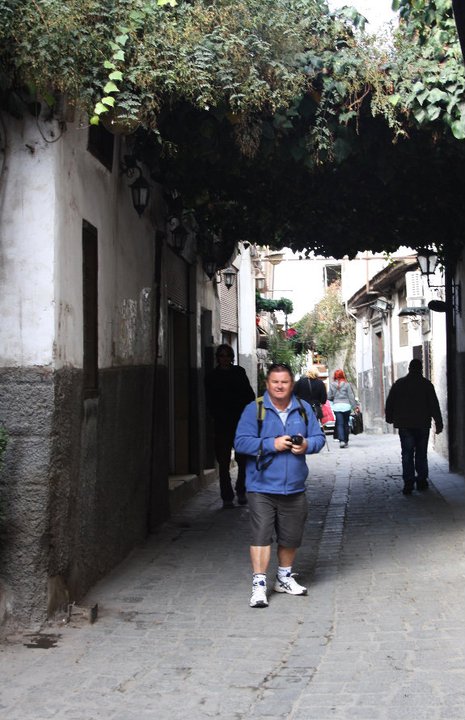


















Surrounded by modern Damascus it could be considered decrepit, and it is certainly antiquated. But, it is also intriguing, very different and hence worth exploring. It was a bit of a culture shock for we newbies to this part of the world and is best absorbed by staying over within its boundaries and trekking down side streets and alleys just to see what's there, day or night.
Intersected by the 1.5km Straight Street (or, more correctly, "A Street Called Straight") which contains one of the city's largest souqs - the Souq al-Hamidiyya, packed with tiny shops, entered through columns from a Roman temple built on a site that had been occupied by an even older temple. The souq smells of spices with craft shops dedicated to everything from leather and copper goods to inlaid boxes and silk scarves it is covered by an arched steel roof supported by iron lacework, with torch-beam-like shafts of sunlight admitted through bullet holes punctured through the roof by the machine-gun fire of French planes during the nationalist rebellion of 1925. (I have plagiarised parts of that description because it is so accurate.) Click on this link and the long steel roof can be readily identified across the middle of the satellite image.



















Bashir led us on a night excursion down a dark cobblestone alley off the souq, scattering stray cats and dodging the open drain water feature that ran down the middle. After tapping on a large but non-descript wooden door we were admitted into a large, tiled pleasure palace of decadence, should unlimited booze of all descriptions be your definition of decadence. After some initial curiosity from the mostly be-suited, moustachioed clientelle we were entertained by a whirling dervish, located and booked by Bashir at our request and Sean got some oud-playing tips from one of the band.